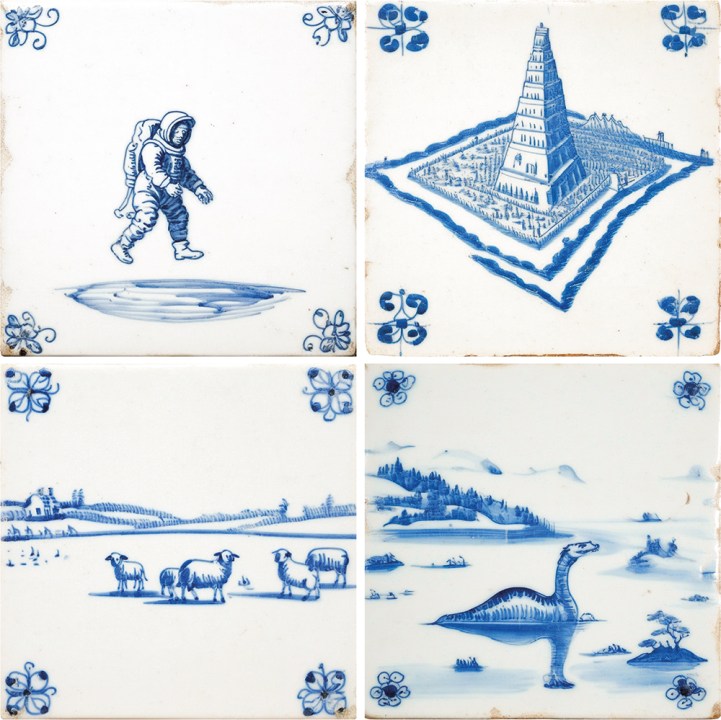In front of me is what appears to be an authentic Delft tile. The surface of the tile is mottled, and painted on to it is a picture of a man. The blue tones blur and fade into the edges. Delicate brush strokes are visible if you peer closely. It looks as though it were made many years ago. Except it wasn’t. It was designed this morning by artificial intelligence and created in a small factory near Stoke-on-Trent, using some of the most advanced printing technology available.
‘Josiah Wedgwood would have loved what we are doing… I suspect William Morris would have hated it,’ says Adam Davies, the co-founder of the company creating these tiles. Davies, who is currently reading Radical Potter, Tristram Hunt’s biography of Wedgwood, draws inspiration from the renowned ceramicist’s innovative spirit.
In May, Davies and his business partner Jack Marsh, both in their mid-twenties, launched Not Quite Past. Through their website, customers can use AI to create bespoke tiles in the traditional Delftware style. To date, more than 70,000 designs have been generated by a growing and curious audience, with the AI continuously trained to produce new ornaments. A single tile costs £9.99.
The AI has learnt to create mistakes to allow for what looks like human error
The concept came to them during a historical walking tour of Birmingham. ‘We were thinking about ornament and how we once made attractive mass-produced decorations for buildings. Why don’t people do that now, we wondered. Obviously, people could do that now. But in a way, the arrival of AI is a very similar process to what happened in the Industrial Revolution, when it suddenly became much cheaper to make things, so people began to cover their buildings with them.’ They hope that their technology might encourage a revival in mass-market decoration.
And how do they train the AI? ‘We direct it towards Delft tiles from all around the world, and in particular those found in museum collections that are available to view online,’ explains Marsh.









Comments
Join the debate for just £1 a month
Be part of the conversation with other Spectator readers by getting your first three months for £3.
UNLOCK ACCESS Just £1 a monthAlready a subscriber? Log in